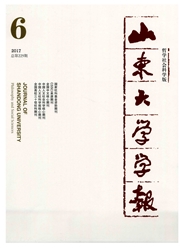

 中文摘要:
中文摘要:
在综述前人有关服务特征研究的基础上,从深入分析现代服务业在可迁移性和交互性方面不同于传统服务业特征的角度出发,以近年来现代服务业在全球主要国家、地区的GDP中超过60%的统计数据及三个现代服务业典型个案为佐证,指出了传统服务理论在指导现代服务业营销中存在的局限。据此,在现代服务可迁移性和交互性分离两大基本特征概念下,对传统服务的7个特征属性进行了理论扩展,构建了诠释两者之间关系的概念模型。由于模型所揭示的规律和管理趋势属于一种探索性的创新研究,花了比较多的篇幅阐释和探讨了模型的逻辑和理论步骤、模型三部分主体内容的理论内涵及理论逻辑关系。最后,根据研究结论,从宏观产业布局,优化服务产业内部结构角度推动中国现代服务产业的发展;中国企业如何应对“后WTO时代”的服务全球化竞争;如何实现传统服务向现代服务转型,制定和实施现代服务产品战略和策略等方面,给出了管理建议。
 英文摘要:
英文摘要:
Based on a review of the characteristics of services industry, this paper points out the limitations of tra- ditional theories on services in guiding modern services industry marketing by making an in-depth analysis of the differences between modern and traditional services industry in terms of transferability and interactivity. Employed in our study are data on modern services industry in the world's major countries for which services industry represents over 60 percent of national GDP. In addition, three classic cases are cited to validate our conclusions. Thus, based on the central characteristics of modern services industry--its transferability and interactivity, this paper extends the concepts of the seven attributes of traditional services, and constructs a model to interpret the relation- ship between them. The paper dwells on the logic of the model and the theoretical connotations of the major compo- nents of the model because it is a pioneering work in the field. Finally, the paper explores the implications for optimizing the structure of services industry and developing strategies and tactics to transform traditional services indus- try to modern services and cultivating the firms' responsiveness to global competition.
 同期刊论文项目
同期刊论文项目
 同项目期刊论文
同项目期刊论文
 期刊信息
期刊信息
